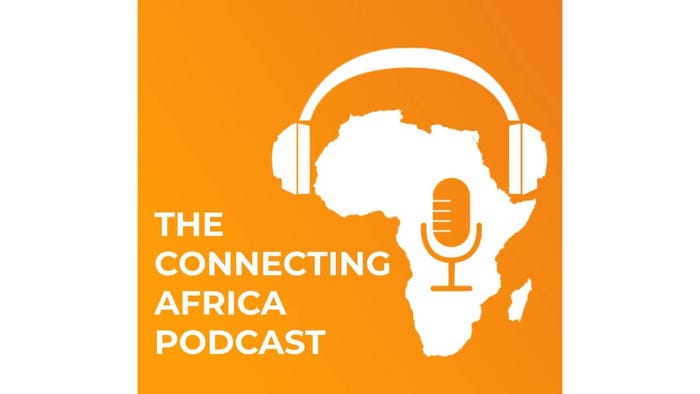What's on the horizon for Africa's cloud computing market?What's on the horizon for Africa's cloud computing market?
ICT analyst Francis Hook discusses Africa's cloud computing outlook in 2025 and some of the rising trends in the market.
_(1).jpg?width=1280&auto=webp&quality=95&format=jpg&disable=upscale)
Over the past decade, cloud computing has evolved from early hype and tentative adoption to more widespread acceptance, with many organizations now prioritizing cloud-first strategies when considering new investments.
The continent's cloud adoption growth had been underpinned by infrastructure development, most notably in the areas of connectivity and power.
Cloud also brings numerous benefits including expenditure shifts from capital expenditure (capex) to operating expenditure (opex), infrastructure scalability, project agility and systems redundancy.
Cloud computing is a core component of the engine driving digital transformation in enterprises – enabling mobile access to services, powering the Internet of Things (IoT) and other applications that together form the building blocks of digital economies.
Much of this would not have been possible without an enabling environment which creates frameworks for data protection, privacy, fraud prevention and cybersecurity.
Hyperscalers vs. local cloud providers
As the African market has matured it has attracted global hyperscalers like Amazon Web Services (AWS), Microsoft, Google, IBM, Oracle and Alibaba, most of which have already set up cloud regions on the continent to deliver local instances that help reduce latency.
Insofar as these players aim to serve the entire spectrum of the market – from small and medium enterprises (SMEs) to large corporates – the current trend shows that smaller organizations prefer using local cloud and data center providers with whom they can establish closer working relationships.
Local cloud and data center operators are better able to meet the various compute, storage and development needs of smaller organizations in a less complex manner compared to hyperscalers which have models more suited to larger organizations with bigger needs.
In addition, local providers are more accessible and able to offer adequate levels of customer service.
_(1)_(1).jpg?width=1280&auto=webp&quality=80&disable=upscale)
As the African cloud market has matured global hyperscalers have set up local regions and local cloud and data center providers are also on the rise. (Source: Image by Freepik)
Players in the local cloud, colocation and data center space include iColo, IXAfrica, Africa Data Centres (a subsidiary of Cassava Technologies), Raxio, Digital Realty, Rack Centre, Teraco, Orange, MainOne and Paratus Group.
For the most part, these players are found in regional geographic hubs: South Africa, Nigeria, Egypt and Kenya.
Connectivity providers
The connectivity aspect is dominated by a few key players in the terrestrial fiber space with footprints extending to multiple countries or sub-regions.
Key connectivity carriers include Liquid Intelligent Technologies (a subsidiary of Cassava Technologies), Bayobab (formerly MTN Global Connect), Airtel, Orange, MainOne and Globacom.
Some of these players also operate their own carrier-neutral data centers and collaborate with some of the hyperscalers to deliver services to local markets.
For onward international connectivity there are a host of submarine operators along the east, west and Mediterranean coasts.
Infrastructure investment and regulation
Connectivity infrastructure buildouts by carriers, especially those of a national or cross border nature, have been receiving support from lending organizations like the African Development Bank (AfDB) and the World Bank's lending arm, the International Finance Corporation (IFC).
In less developed countries, donors and other multilateral agencies have also been helping governments build national backbones to backhaul connectivity and connect landlocked countries to allow access to submarine cables.
A review of the cloud landscape in Africa would also be incomplete without taking a quick glance at the policy and regulatory environment.
Regulations on data protection and privacy, and those that address data residency, have been integral to allow new players to enter the market and enable end-users to adopt cloud services.
In addition, guidelines and regulations relating to colocation and infrastructure sharing – mainly imposed on infrastructure providers – have provided a good working framework for collaboration among different market players.
Technology evolution brings new issues
As more businesses embrace cloud technology and as technology evolutions add complexity to cloud environments there are some emerging issues affecting the complexion of the market.
Artificial intelligence (AI)
Foremost among the technological changes in the market is the mainstreaming of AI since 2023 and the enormous computing and power requirements that have come with it.
The cost of investing in infrastructure is not only a very key consideration but is something that will ensure that Africa has a foot in the door when it comes to AI evolution.
A widespread consensus is that Africa must stake its claim in this arena to push back on, or preempt, ethical and bias issues that may arise from relying on systems trained using data that is not cognizant of African needs or which does not embrace local social contexts.
AI is seen as a gamechanger in many facets of life for consumers and businesses, and is too important to neglect or postpone.
Unlike other technologies that entail development or manufacturing, AI sits in a realm which is moving rapidly. To deliver AI equitably and justly, all players must participate equally and collaborate in developing different systems.
Africa needs to invest in areas like skills, infrastructure and data to be part of the innovation and development cycles, rather than merely being an adopter or consumer.
Because Africa has peculiar social and development requirements, there is a need to leverage AI to address those needs specifically.
Edge computing
Over the years players in the cloud and data center space have had to rationalize their strategies and investments based on the realization that certain workloads and latency issues merited edge networks.
There has been a departure from conventional cloud infrastructure to more distributed clouds in which proximity to end-users has been a key consideration, and in which complexity and costs become significantly lower.
Mobility and IoT
It's impossible to speak of mobility without speaking of cloud, especially when it comes to computing power, storage, analytics, applications and other areas as enablers.
Broadly speaking, mobility (including machine-to-machine communications and IoT) continues to be the hinge on which most ICT applications swing. Whether it is from the consumer or business side or across different sectors.
Cloud is the ubiquitous go-to solution for many services in markets that are also characterized by mobile-first strategies.
Across the continent IoT uptake is growing with many use cases in sectors like agriculture, healthcare, public safety, banking, logistics and transport.
_(1).jpg?width=1280&auto=webp&quality=80&disable=upscale)
Cloud computing is a core component of digital transformation - enabling mobile access to services and powering technologies like IoT. (Source: Image by rawpixel.com on Freepik)
Sustainability
As the tech ecosystem experiences increased power and cooling needs, sustainability has been on the agenda for cloud players and regulators for some time.
With the growing demands that AI will exert, vendors and manufacturers have been exploring sustainable ways to meet these needs.
Some of this is driven by end-users whose internal policies place an onus on them to only work with providers that have proven sustainability strategies.
Countries like Kenya are receiving attention for the high percentage of power generated using renewable sources.
In 2024, a consortium of hyperscalers announced plans to collaborate on building a 100MW data center in the country by 2027. This planned facility will be designed to rely entirely on renewable (hydrothermal) energy.
Cooling is another area in which sustainability can be realized through selection of cooler locations for data centers as well as considering liquid cooling options.
Regulation
With more players setting up hubs across the region, with the intention of serving clients across borders, regulatory issues relating to data residency and sovereignty are receiving more attention, especially for sectors like finance, healthcare and government.
As always, cybersecurity and data protection are constant fixtures in the landscape and will be for years to come.
Shifting workloads to the cloud invariably exposes businesses to all sorts of risks, and especially when data is of a critical nature or where systems, if breached, would result in financial losses.
Redundancy
The importance of pervasive terrestrial fiber networks has come into sharp focus over the past two years due to rather severe outages on submarine cable systems along both east and west coasts of Africa.
The west coast outages of 2024 were partly mitigated by routing traffic overland in some locations, thereby allowing continuity and reducing latency.
Route diversity via terrestrial networks is becoming even more important as different players and governments try to extend fiber networks across the continent.


.jpg?width=700&auto=webp&quality=80&disable=upscale)
_(1)_(1).jpg?width=700&auto=webp&quality=80&disable=upscale)
.jpg?width=700&auto=webp&quality=80&disable=upscale)
_(1).jpg?width=700&auto=webp&quality=80&disable=upscale)
.jpg?width=700&auto=webp&quality=80&disable=upscale)
.jpg?width=700&auto=webp&quality=80&disable=upscale)
_(1).jpg?width=700&auto=webp&quality=80&disable=upscale)
.jpg?width=700&auto=webp&quality=80&disable=upscale)
.jpg?width=800&auto=webp&quality=80&disable=upscale)

.jpg?width=700&auto=webp&quality=80&disable=upscale)